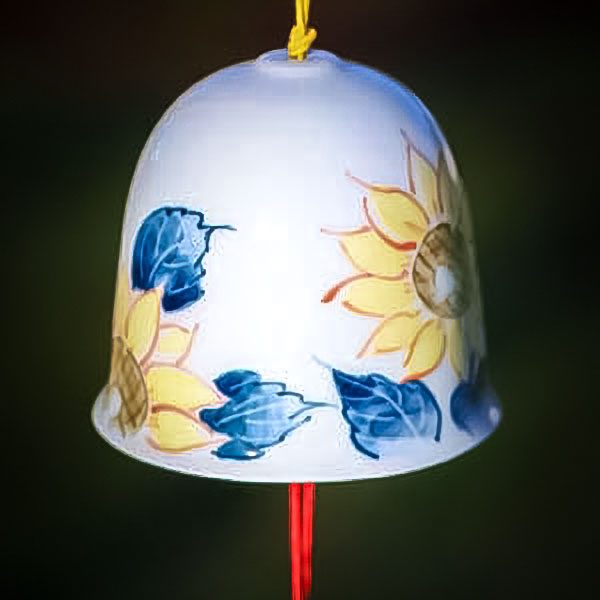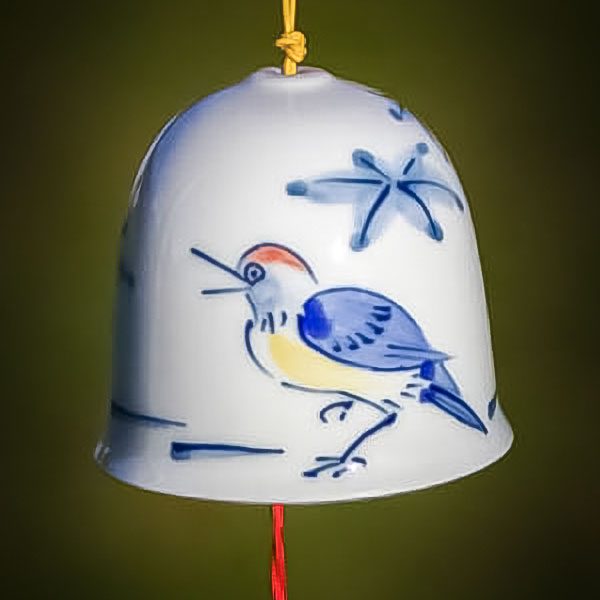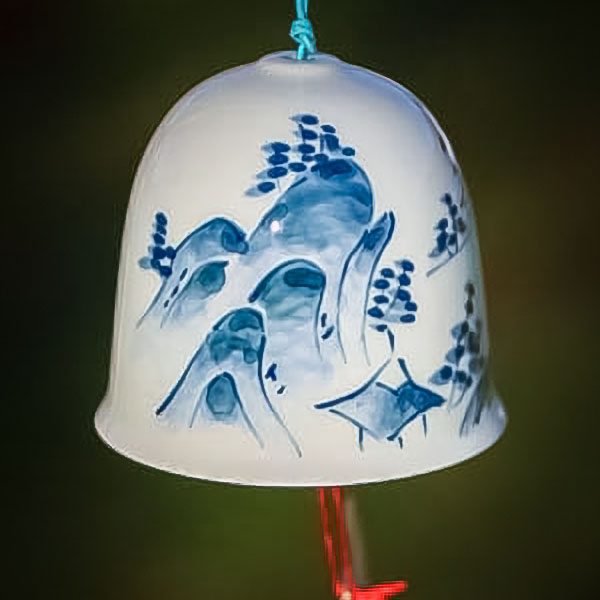High-quality ceramic wind bells, handmade in Japan
Imari porcelain is the name for Japanese porcelain products made in the town of Arita, in the former Hizen Province, northwestern Kyūshū. They were exported to Europe extensively from the port of Imari, Saga between the latter half of the 17th century and the former half of the 18th century, Japanese as well as the Europeans called them Imari. In Japanese, these porcelains are also known as Arita-yaki. Imari or Arita porcelain has been produced continuously until the present date.
The delicate sound of ceramic wind bells is reminiscent of a teaspoon clinking the sides of a teacup while stirring in the sugar. It’s light, airy and cheerful. The delightful designs on each bell are unique – the artwork is inspired by everything from native birds and sleeping kittens to spring flowers.
All you need to know about ceramic wind bells
How are ceramic wind bells made?
Each bell is hand-crafted and hand-painted in traditional Imari style by skilled craftspeople. In ancient times, to maintain Nabeshima Ware’s status as an elite gift, the techniques used by the potters to produce the porcelain were a highly guarded secret. The surrounding mountain landscape allowed the Nabeshima clan to guard the kilns and keep the potters from escaping so the production methods weren’t leaked.
Where do our ceramic wind chimes come from?
These beautiful and delicate ceramic wind chimes are handmade in the town of Arita, in the former Hizen Province, northwestern Kyūshū in Japan.
How do I play my ceramic wind chime?
Ceramic wind chimes produce delicate sounds with a gentle touch. They are designed to be played by the wind – the sound will resonate with a gentle breeze. Place the wind chime in an area with good airflow to create soothing and effortless melodic tones.
How do I care for my ceramic wind chime?
You can protect your ceramic wind chime from the elements by hanging it outside in a spot that’s protected by tree coverage or on a balcony, patio or pergola with a roof. Ensure your bell is securely attached to its hanging place and remember to bring it inside during severe weather. A gentle wipe with a damp cloth will be enough to remove any dirt that might build up on the exterior.









